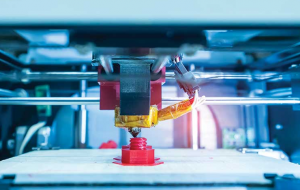Applications Demonstrating the Future of 3D Printing
الجسم
While there are countless examples of custom 3D printing being used for incredible things, here are a few examples of what the future may hold:3D printers have long been capable of printing rocket-shaped objects, but it is only recently that companies in the aerospace industry have begun to print actual rockets. Companies such as Aerojet Rocketdyne are utilizing additive manufacturing for applications such as rocket engines and defense systems. The decision to use additive manufacturing to deliver hypersonic flight was influenced by factors such as reduced lead times, affordability, and new design approaches.
3D printing (also known as additive manufacturing) was once considered a far-fetched pipe dream, but it is now a well-established technology with the potential for significant growth. Do you remember when 3D printing was first introduced? We were all giddy with anticipation as model versions of the Brooklyn Bridge and iconic cartoon characters began to appear on our desks.
The fundamental principle of 3D printing, also known as additive manufacturing, is the addition of layers of materials compounded to create an object. Whereas cutting and soldering were once required to construct the same type of structures, additive manufacturing gracefully adds layers to construct the same type of structures. Although the results are stronger, lighter and more temperature resistant, they also necessitate the use of fewer parts.
In the field of healthcare, additive manufacturing holds out great promise as well. By utilizing rhCollagen as a 3D printing substrate, 3D Systems, in collaboration with CollPlant, is advancing regenerative medicine by printing artificial tissues and scaffolds and advancing regenerative medicine. The story of the electric vehicle industry is similar. Local Motors Industries, a company with only 130 employees, has already printed a 3D car, which has since been discontinued. They are currently printing an urban electric shuttle, with digital design advancements cited as a contributing factor in the process.
Experts predict that the most significant advances in the industry will occur in the technology that facilitates additive manufacturing. Printers will almost certainly become even faster in the future, allowing them to work on larger, more industrial-scale projects. As a result, they are more useful in remote areas and allow for a greater variety of 3D printed structures.
3D printing is also being used to address inefficiencies in supply chains. Nora Toure, the founder of Women in Plastic 3D Printing, predicts that “a countless number of companies will have adopted additive manufacturing into their supply chain commercially, with a vast majority of products to be produced on-demand and locally (not necessarily through additive manufacturing, but rather as a combination of manufacturing tools, including additive manufacturing).”
3D printers will also increase versatility in other ways, such as the ability to print in a variety of materials, such as metal and even ceramics, all within the same machine. Printers will be able to print a single object that contains multiple materials, opening the door to a significantly broader range of applications.
Additive manufacturing will reach entirely new heights with the help of integrated CAD/CAM software such as Autodesk's Fusion 360. The Fusion 360 team is constantly brainstorming new and innovative ways to improve and enhance the additive manufacturing process. Our recent announcement of a new method for generating additive manufacturing outcomes using generative design is a step forward in this field. This new method does a better job of meeting minimum thickness requirements, balancing design mass, and minimizing support material — all while maintaining shape quality and being fully self-supporting.
Hyundai, Panasonic, and other leading companies have investigated the advantages of using generative design in conjunction with additive manufacturing, among them. Download Fusion 360 right now to learn about cutting-edge additive manufacturing solutions.











تعليقات